20 start with V start with V
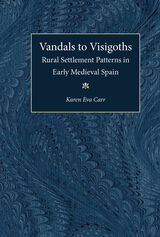
Vandals to Visigoths uses archaeological survey data as a springboard to a theoretical discussion of rural survival strategies in the non-industrial world and the ways in which these strategies are affected by government actions. Carr draws on historical, archaeological, and ethnographic comparanda to conclude that the larger, more powerful Roman government was more advantageous for the rural poor than the weaker Vandal and Visigothic regimes. Though Carr agrees that the lives of the rural people and the free slaves were miserable, she shows through her data and theory that they became even more wretched after the decline of the empire.
Vandals to Visigoths will appeal to historians of Rome, as well as of Early Medieval Europe and Spain. Anthropologists, economists, and political scientists who study Late Antiquity and the medieval period will also be interested, as it discusses the broader implications of the role of government in the lives of early medieval Spain's subjects.
Karen Eva Carr is Associate Professor of History, Portland State University.
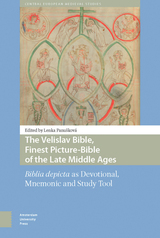
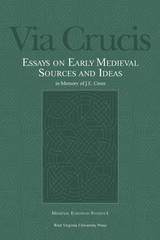
This book originated as a series of papers delivered at a Symposium on Irish and Anglo-Saxon Literary Culture in Honor of J. E. Cross, held in conjunction with the 30th International Congress on Medieval Studies at Kalamazoo in May 1996. The purpose of that symposium was to bring together a number of friends and admirers of Professor Cross to celebrate his remarkably rich career as a scholar of Old English and Insular Latin literature; Anglo-Saxon manuscripts; and medieval sermons, saints’ lives, and apocrypha.
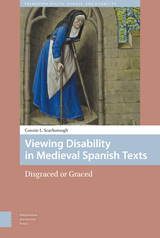
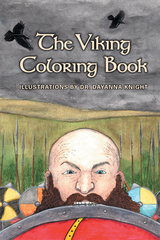
What do you think of when you think of the Vikings? Fierce warriors? Sailors of magnificent dragon-prowed ships who terrorized North-Western Europe? Do you think of darkened halls thick with smoke and song?
Like all people those researchers now consider to be Viking were much more complex than the modern world sees them as. This coloring book is meant to show that. It is designed to provide scenes of the beauty of the early medieval world the Vikings inhabited. It is in this context that Viking cultures developed. You will find artifacts and animals, plants and landscapes within these pages to explore. Species that held some use to the Vikings, such as those that provided fur in particular have been focused on. Reconstructed scenes are inspired by the diverse world experienced in the north. There are no horned helmets here. The real Vikings were much more practical than that.
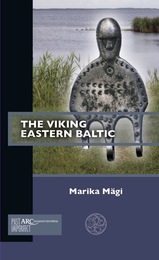
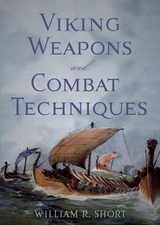
A source of enduring fascination, the Vikings are the most famous raiders of medieval Europe. Despite the exciting and compelling descriptions in the Icelandic sagas and other contemporary accounts that have fueled this interest, we know comparatively little about Viking age arms and armor as compared to weapons from other historical periods. We know even less about how the weapons were used. While the sagas provide few specific combat details, the stories are invaluable. They were written by authors familiar with the use of weapons for an audience that, likewise, knew how to use them. Critically, the sagas describe how these weapons were wielded not by kings or gods, but by ordinary men, as part of their everyday lives. Viking Weapons and Combat Techniques provides an introduction to the arms and armor of the people who lived in Northern Europe during the Viking age, roughly the years 793–1066. Using a variety of available sources, including medieval martial arts treatises, and copiously illustrated with images of historical artifacts, battle sites, and demonstrations of modern replicas of Viking weapons, the author and his colleagues at Hurstwic (a Viking-age living history organization) and at the Higgins Armory Sword Guild have reconstructed the combat techniques of the Viking age and what is known about the defensive and offensive weapons of the time in general. Throughout, the author corrects some popular misconceptions about Viking warriors and warfare, such as the belief that their combat techniques were crude and blunt rather than sophisticated. In addition, the book provides an overview of Viking history and culture, focusing on the importance of weapons to the society as well as the Vikings’ lasting impact on Europe through their expeditions of trade and exploration.

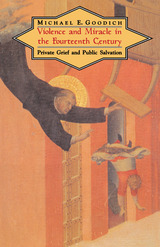
Rescue miracles offer a wide range of voices rarely heard in medieval history, from women and children to peasants and urban artisans. They tell of salvation not just from the ravages of nature and war, but from the vagaries of a violent society—crime, unfair judicial practices, domestic squabbles, and communal or factional conflict. The stories speak to a collapse of confidence in decaying institutions, from the law to the market to feudal authority. Particularly, the miraculous escapes documented during the Hundred Years' War, the Italian communal wars, and other conflicts are vivid testimony to the end of aristocratic warfare and the growing victimization of noncombatants.
Miracles, Goodich finds, represent the transcendent and unifying force of faith in a time of widespread distress and the hopeless conditions endured by the common people of the Middle Ages. Just as the lives of the saints, once dismissed as church propaganda, have become valuable to historians, so have rescue miracles, as evidence of an underlying medieval mentalite. This work expands our knowledge of that state of mind and the grim conditions that colored and shaped it.
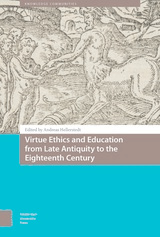
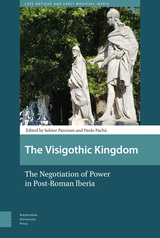
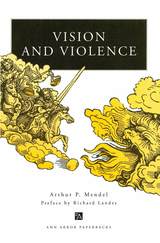
Much of the book is devoted to an examination of the persistence of the apocalyptic heritage from ancient Greek and Hebrew civilizations, through the religious revivals of the Middle Ages and the Enlightenment belief in progress, to its importance in Hegelian and Bolshevik thought, and finally to its expression today in the resurgence of religious fundamentalism in Judaism, Christianity, and Islam.
Mendel concludes his remarkable book with an appeal for the more modest and humane philosophy of the "repair of the world," which, he argues, is central to biblical teaching.
The late Arthur P. Mendel was Professor of History, University of Michigan, specializing in Russian intellectual history. His first book, Dilemmas of Progress in Tsarist Russia: Legal Marxism and Legal Populism, established him as one of the outstanding historians of his generation. Richard Landes is co-founder, with Stephen O'Leary, of the Center for Millennial Studies. He is also Associate Professor of History, Boston University, and author of Relics, Apocalypse, and the Deceits of History: Ademar of Chabannes, 989-1034.
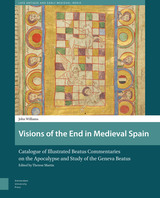
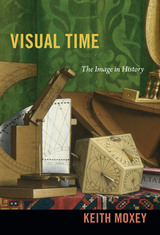

Cappadocia, a picturesque volcanic region of central Anatolia, preserves the best evidence of daily life in the Byzantine Empire and yet remains remarkably understudied, better known to tourists than to scholars. The area preserves an abundance of physical remains: at least a thousand rock-cut churches or chapels, of which more than one-third retain significant elements of their painted decoration, as well as monasteries, houses, entire towns and villages, underground refuges, agricultural installations, storage facilities, hydrological interventions, and countless other examples of non-ecclesiastical architecture. In dramatic contrast to its dearth of textual evidence, Cappadocia is unrivaled in the Byzantine world for its material culture.
Based upon the close analysis of material and visual residues, Visualizing Community offers a critical reassessment of the story and historiography of Byzantine Cappadocia, with chapters devoted to its architecture and painting, as well as to its secular and spiritual landscapes. In the absence of a written record, it may never be possible to write a traditional history of the region, but, as Robert Ousterhout shows, it is possible to visualize the kinds of communities that once formed the living landscape of Cappadocia.
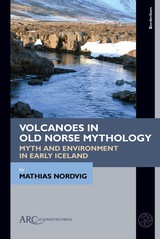
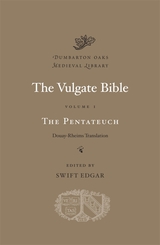
The Vulgate Bible, compiled and translated in large part by Saint Jerome at the intersection of the fourth and fifth centuries CE, was used from the early Middle Ages through the twentieth century in the Western European Christian (and, later, specifically Catholic) tradition. Its significance can hardly be overstated. The text influenced literature, visual art, music, and education during the Middle Ages and Renaissance, and its contents lay at the heart of much of Western theological, intellectual, artistic, and even political history of that period. At the end of the sixteenth century, as a variety of Protestant vernacular Bibles became available, professors at a Catholic college first at Douay, then at Rheims, translated the Vulgate into English, among other reasons to combat the influence of rival theologies.
This volume elegantly and affordably presents the text of the Pentateuch, the first five books of the Bible, beginning with the creation of the world and the human race, continuing with the Great Flood, God’s covenant with Abraham, Israel’s flight from Egypt and wanderings through the wilderness, the laws revealed to Moses, his mustering of the twelve tribes of Israel, and ending on the eve of Israel’s introduction into the Promised Land. This is the first volume of the projected six-volume set of the complete Vulgate Bible.
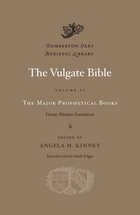
This is the fourth volume of a projected six-volume Vulgate Bible. Compiled and translated in large part by Saint Jerome at the turn of the fifth century ce, the Vulgate Bible permeated the Western Christian tradition through the twentieth century. It influenced literature, art, music, and education, and its contents lay at the heart of Western theological, intellectual, artistic, and political history through the Renaissance. At the end of the sixteenth century, professors at a Catholic college first at Douay, then at Rheims, translated the Vulgate Bible into English to combat the influence of Protestant vernacular Bibles.
Volume IV presents the writings attributed to the “major” prophets (Isaiah, Jeremiah, Ezekiel, and Daniel), which feature dire prophecies of God’s impending judgment, punctuated by portentous visions. Yet profound grief is accompanied by the promise of mercy and redemption, a promise perhaps illustrated best by Isaiah’s visions of a new heaven and a new earth. In contrast with the Historical Books, the planned salvation includes the gentiles.
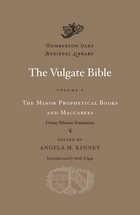
This is the fifth volume of a projected six-volume Vulgate Bible. Compiled and translated in large part by Saint Jerome at the turn of the fifth century ce, the Vulgate Bible permeated the Western Christian tradition through the twentieth century. It influenced literature, art, music, and education, and its contents lay at the heart of Western theological, intellectual, artistic, and political history through the Renaissance. At the end of the sixteenth century, professors at a Catholic college first at Douay, then at Rheims, translated the Vulgate Bible into English to combat the influence of Protestant vernacular Bibles.
Volume V presents the twelve minor prophetical books of the Old Testament, as well as two deuterocanonical books, 1 and 2 Maccabees. While Jewish communities regarded the works of the twelve minor prophets as a single unit (the Dodecapropheton), the Vulgate Bible treats them individually in accordance with Christian tradition. The themes of judgment and redemption featured prominently in the major prophets (Volume IV) are further developed by the minor prophets. The books of 1 and 2 Maccabees conclude the volume. Their doctrinal controversies and highly influential martyrdom narratives anticipate the development of Christian hagiography both as a genre and as a theological vehicle.
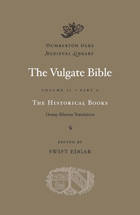
This is the second volume, in two parts, of a projected six-volume set of the complete Vulgate Bible.
Compiled and translated in large part by Saint Jerome at the turn of the fifth century CE, the Vulgate Bible was used from the early medieval period through the twentieth century in the Western Christian (and later specifically Catholic) tradition. It influenced literature, visual arts, music, and education during the Middle Ages and Renaissance, and its contents lay at the heart of Western theological, intellectual, artistic, and even political history during that period. At the end of the sixteenth century, as Protestant vernacular Bibles became available, professors at a Catholic college first at Douay, then at Rheims, translated the Vulgate Bible into English, primarily to combat the influence of rival theologies.
Volume II presents the Historical Books of the Bible, which tell of Joshua’s leading the Israelites into the Promised Land, the judges and kings, Israel’s steady departure from God’s precepts, the Babylonian Captivity, and the return from exile. The focus then shifts to shorter, intimate narratives: the pious Tobit, whose son’s quest leads him to a cure for his father’s blindness; Judith, whose courage and righteousness deliver the Israelites from the Assyrians; and Esther and Mordecai, who saved all the Jews living under Ahasuerus from execution. These three tales come from books that were canonical in the Middle Ages but now are often called “apocryphal,” with the partial exception of the Book of Esther.
READERS
Browse our collection.
PUBLISHERS
See BiblioVault's publisher services.
STUDENT SERVICES
Files for college accessibility offices.
UChicago Accessibility Resources
home | accessibility | search | about | contact us
BiblioVault ® 2001 - 2024
The University of Chicago Press









